Bastien Chauvet has been working in visual effects for over 12 years. He has worked in many studios such as Def2Shoot, L’EST, Weta FX and MPC. He has worked on many projects such as Asterix at the Olympic Games, Paris 36, Rampage and Mortal Engines.
Charles Farkas started his career in visual effects in 2010. He works for many studios like Mac Guff, Umedia, Mikros Image and MPC. He has worked on films like Terminator: Genisys, The Martian, What Happened to Monday and The Last Duel.
What were the approaches and expectations for visual effects?
Bastien Chauvet: There were a lot of different types of effects, which is always very exciting and enriching. So, there was no global approach, a shot could mix a lot of techniques, depending on the level of definition expected the camera movement or the animation of this or that element. Mixing is always beneficial, it allows the eye to be fooled, but also allows the teams not to be bored!
Nevertheless, we were guided by two major working philosophies:
• Always start with a historical approach. As it is an entertainment series, this is not always what was retained in the end, in terms of storytelling; but it was always what guided the artistic direction in the first place.
• Secondly, to preserve or base oneself as much as possible on what exists. Faking remains an art of illusion, and therefore of imitation. Here we were able to rely on the many references taken throughout the production by Marc Jouveneau and the « Excuse My French » team, who were responsible for the overall VFX supervision of the project.
The expectations were very high! The Serpent Queen is one of the first series produced in France by StarzPlay, so it had to be at the same level as any other production on the platform. On the technical finesse of the image. With Charles Farkas, compositing supervisor on the project, we made it a point of honour not to let anything slip by!
Charles Farkas: We always tried to make the shots evolve from their general aspect to the finest details. We kept the photos taken during the shooting in front of us, but also numerous photos arranged in reference plates to better guide the graphic designers and to bring us as close as possible to reality and the desire to make the film. In a film it is often a question of finding the right balance between historical reality and the audience’s understanding of the action and the context. Our crowd shots, for example, were first thought of in terms of mass layout to promote readability, and then we chose the clothes according to the type of event and the time period. I also liked the fact that the series had a variety of effects, which allowed us to diversify the tasks given to each visual effects artists to make their work as motivating as possible.
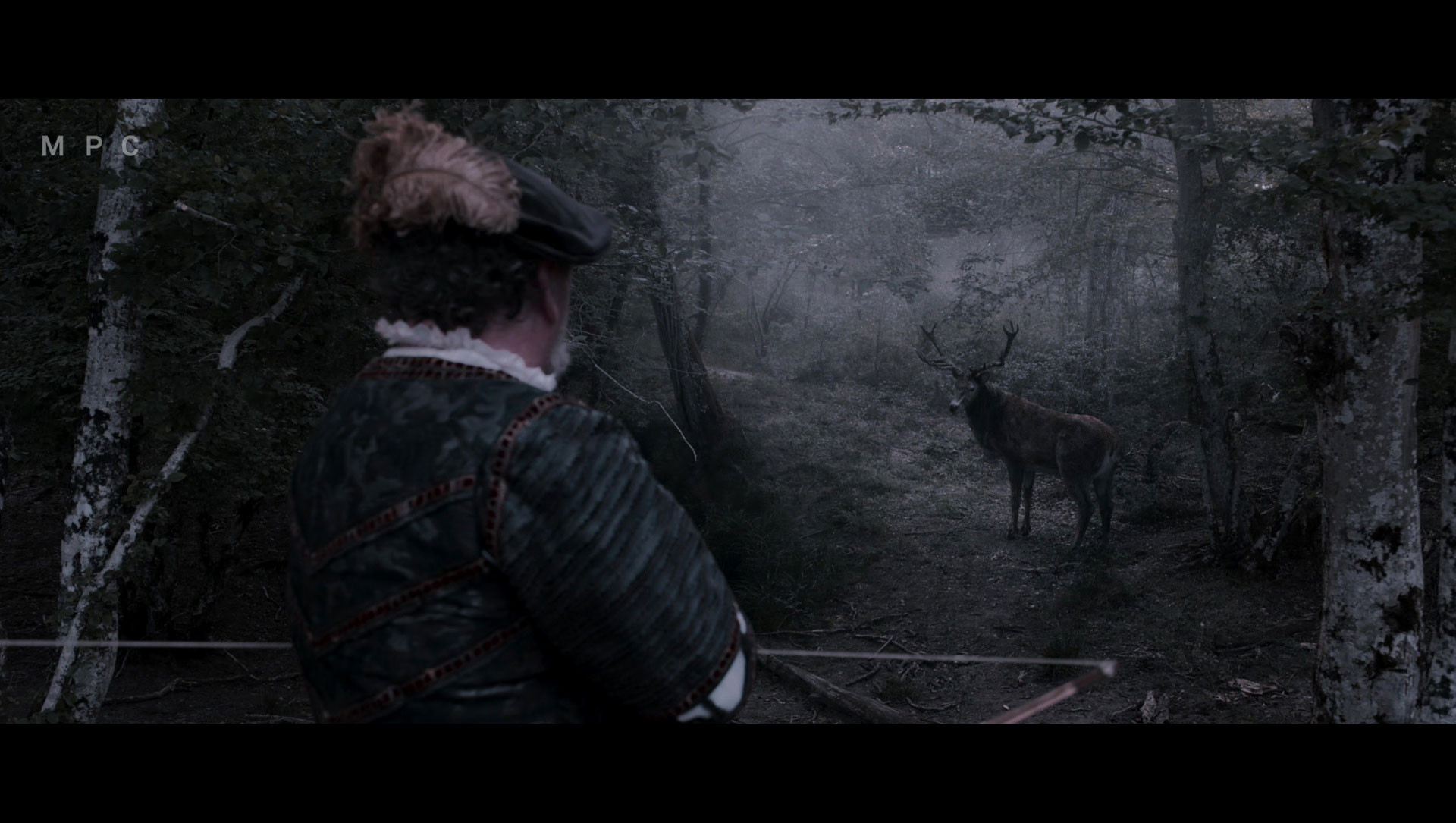
Can you tell us about the full CG shot of the boat arriving on the coast? Were there any challenges?
Bastien: There were several! First, artistic. This is the Pope’s ship arriving on the coast of Marseille. As you can imagine, there are no photographs of the Marseilles coast from the beginning of the 16th century. We therefore had to search for paintings of the time, engravings and other documents giving us information on the layout of the buildings. Our Matte Painting Team, led by Christophe « Tchook » Courgeau, was responsible for this. The same work had to be done for the boat, which is a Venetian galley. Here, too, we were able to base ourselves on paintings, but also on models kept in the museum of naval history in Venice. Then came the actual making of the shot. As there was nothing conservable from our time, we decided to recreate everything in CG. We started with pre-visualisation very early on, which allowed us to agree on the elements to be made and the duration of the shot. The editor was also able to use it while we were making it. Then the cutting was as follows: The coastline and the sky was a Matte Painting projected on basic geometries. The boat was animated by hand, a crowd of sailors was generated on it. Finally came the step of creating the ocean. This was divided into sections according to the level of detail and interaction desired with the ship. Only the area around the ship was simulated in full definition.
Charles: This shot was one of our priorities from the beginning of the production process to define both the movement and the atmosphere most appropriate to the discovery of Marseille. It’s one of the only shots where we have so much perspective on the city, and it was necessary to find the right balance in the composition of the coast and its houses. My wish when managing a project is to encourage as much exchange as possible between our departments and the graphic designers who make them up. The boat shot is a good example of this, Adrien Bauve, compositor on the shot, was able to work jointly with the FX, matte painting and 3D to find the best and most effective solutions.
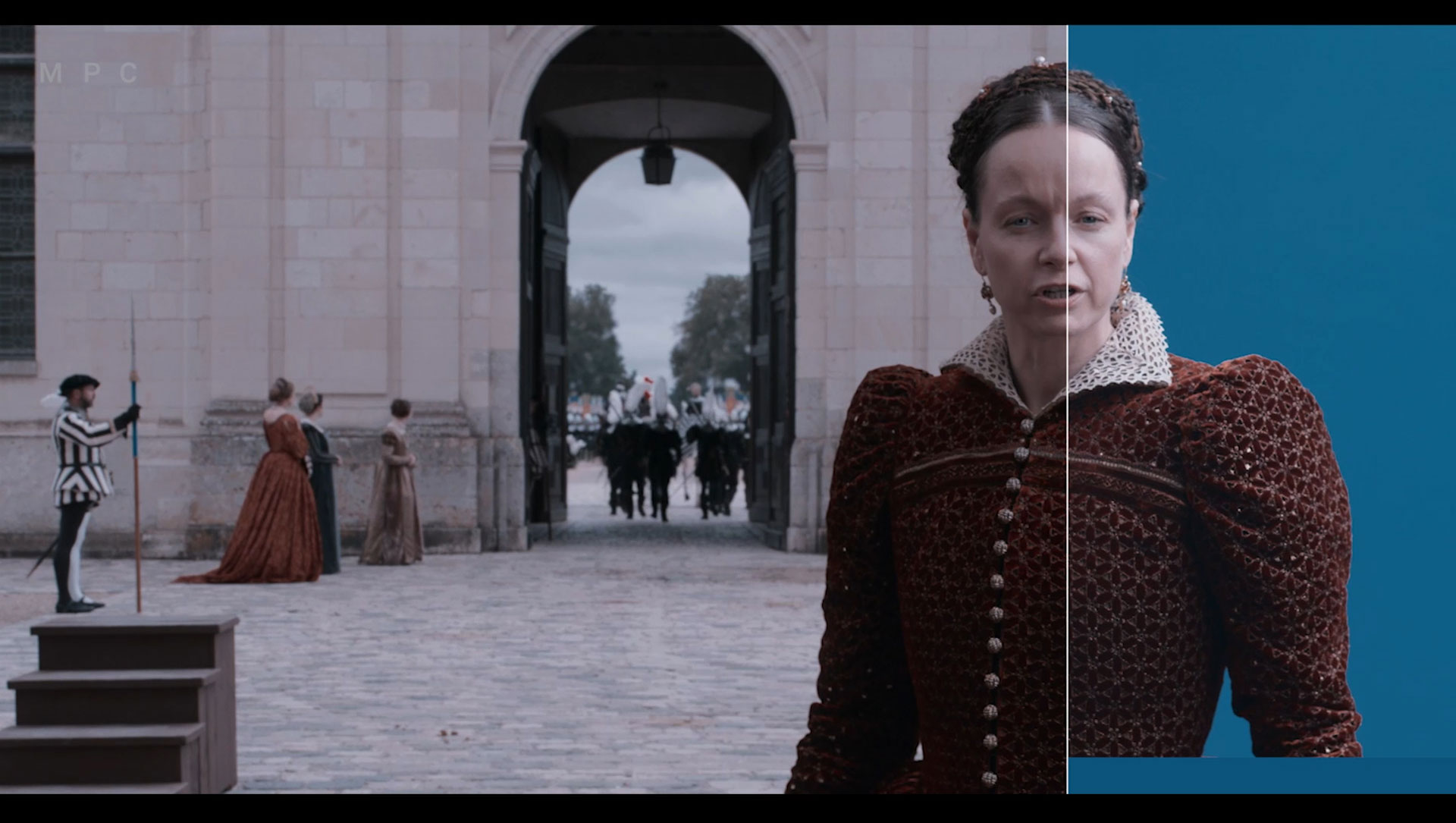
We often talk about 3D landscape and outdoor environments, but it turns out that there are a lot of 3D indoor scene environments – what are the challenges of this type of work? Is the approach different from an outdoor scene?
Bastien: Yes, this was directly related to the historical nature of the project. The production could not access all the places in the history of Catherine de Medici. So, we had to reconstruct them. Artistically, there are few differences in approach. We are always inspired by reality. But technically, the proximity of the objects to the camera plays a big role. We need details and parallax more quickly than with elements located on the horizon. Many of these shots were unique in the editing, so we decided to start by doing what we could in DMP projected on basic models. Then as soon as we realised that the level of definition was not sufficient, we switched to a shaded and lighted 3D complement. So, a lot of these shots are hybrids.
Charles: Special care was taken with the interior scenes, especially with the candle lighting. It is always amazing to see how master paintings an indispensable source of inspiration for these period films are. Rembrandt and Georges De La Tour were a great help!
What was the most complicated sequence or shot to deal with and why?
Bastien: I would say the sequences of the suicide, the dream and the Deer.
In the first one, the actress was shot jumping from a partial set. We replaced the set behind her, and then the actress herself during the jump.
For the second, the brief was that the viewer should not immediately understand that he was in a dream but there had to be elements that would guide them there. The question was therefore to know at what point the switch is made, and how far the viewer is led into the dream world. We did a lot of design and testing to help the creative team. In the end, the sequence is rather wise.
The third was to create a hunting sequence with a deer in 3D. The sequence only consisted of 4 shots in the end, but all were very different. Recreating such a well-known animal was a real challenge. The CG team supervised by Julien Haillot did a great job.
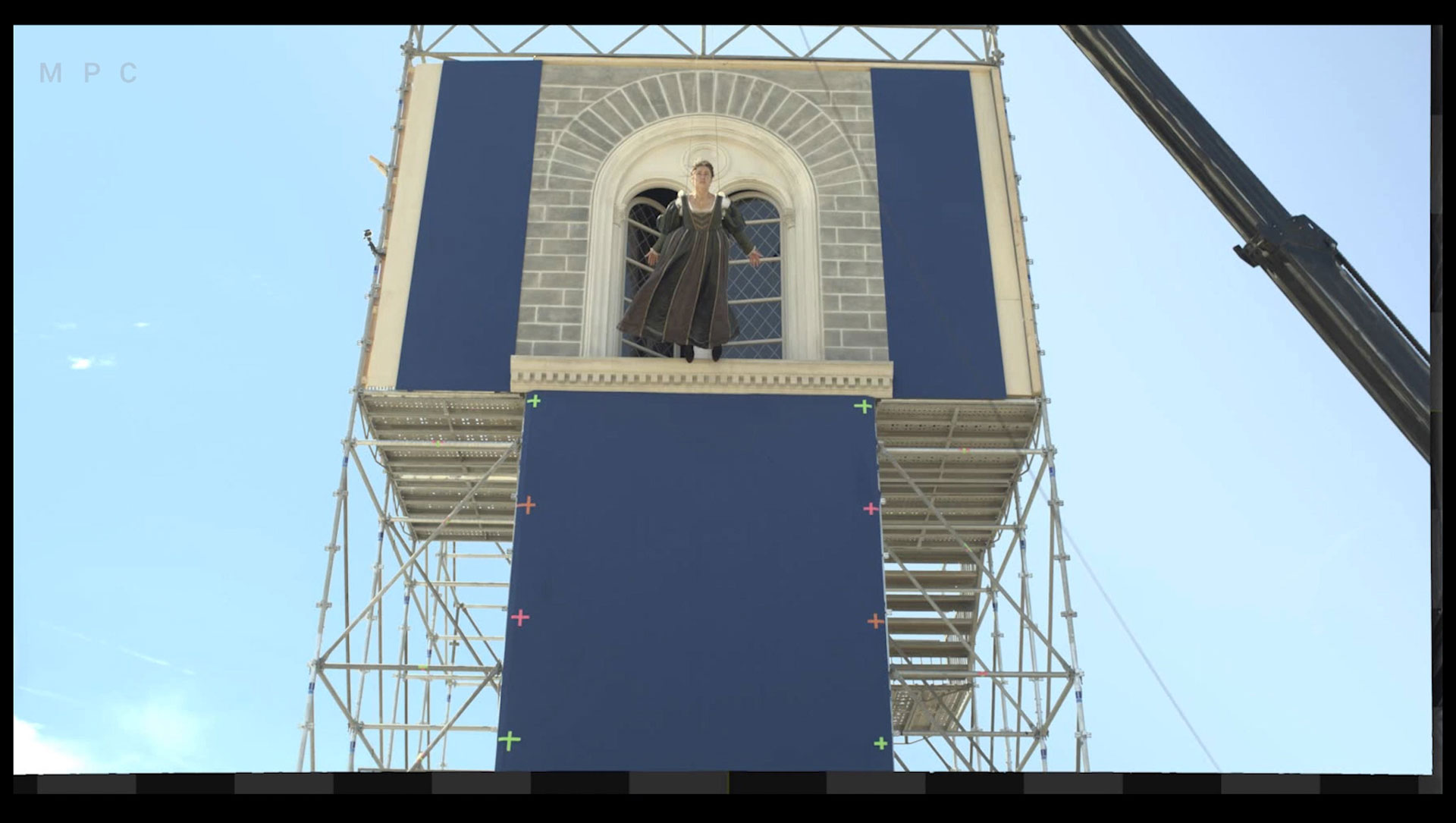
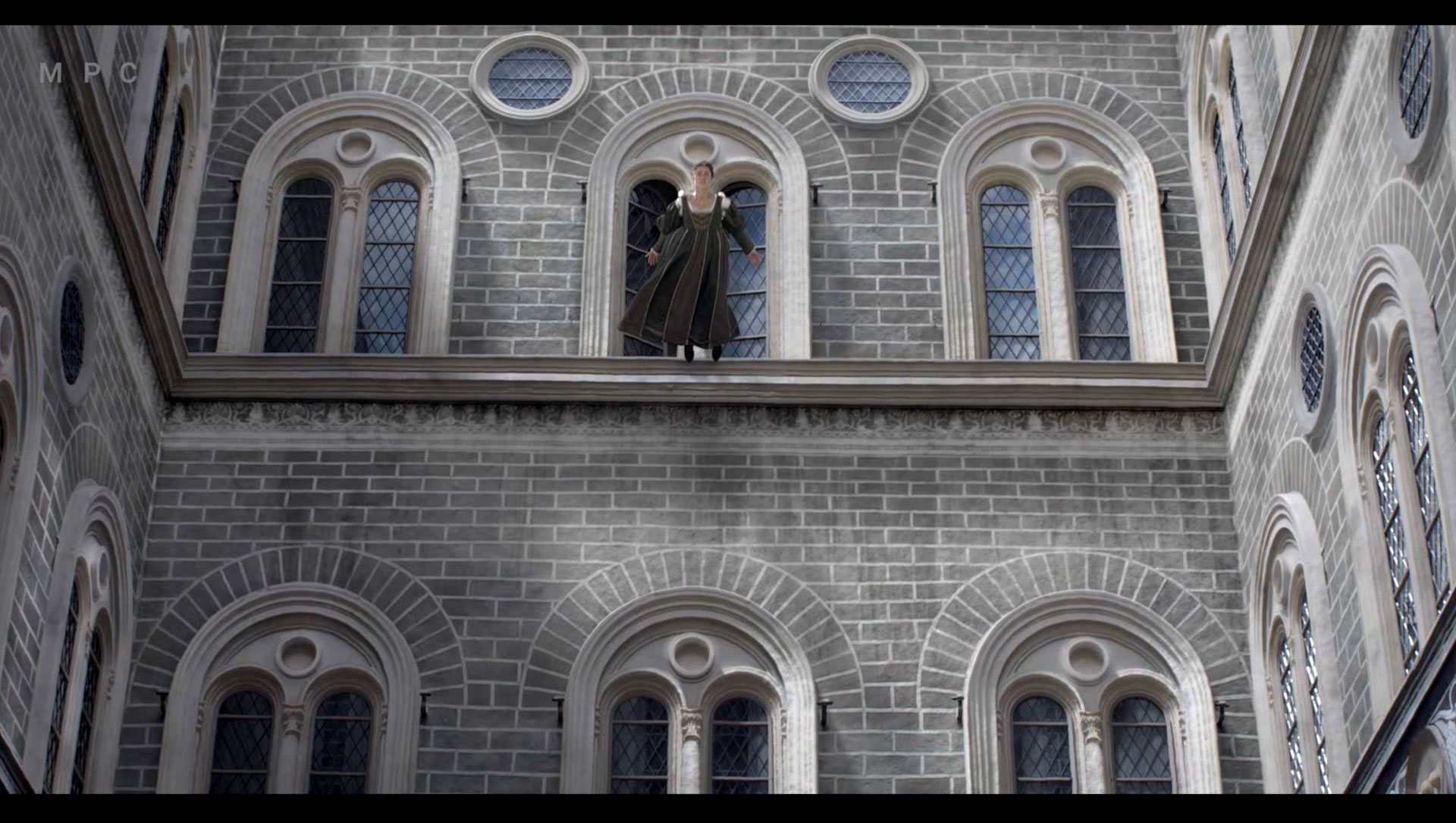
Charles: The dream scene was indeed rich in concepts about the boundary between dream and architectural reality. However, the deer remains for me the greatest difficulty of the project. In the end, our brains must no longer hang on any detail of a CG animal but consider that it is « just there, naturally ». To do this, the team always worked with photo and video references, and we exchanged as much as possible to improve the images.
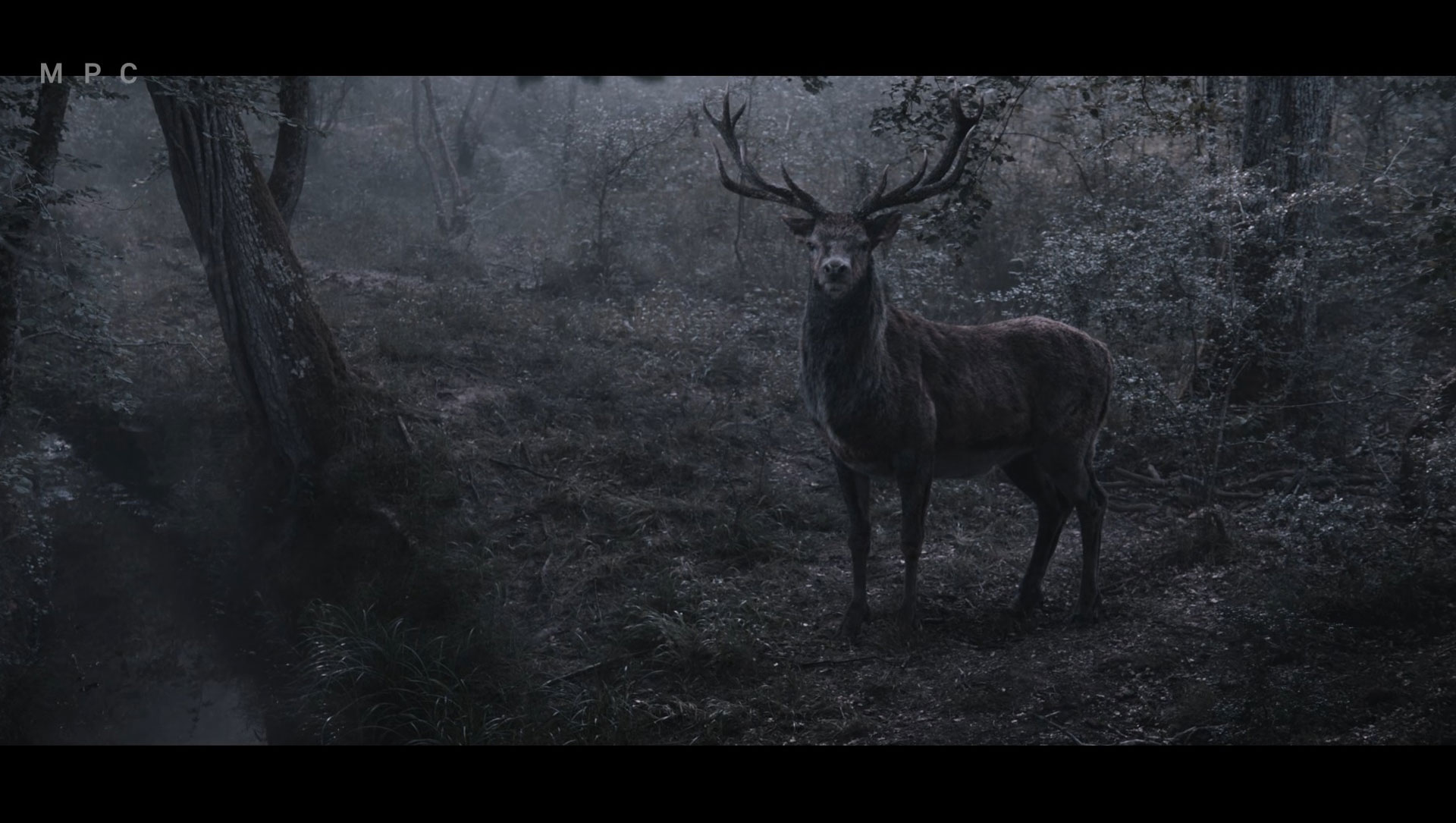
What was your approach to recreating the French castles and settings?
Bastien: There were two types of tricks. Firstly, simple anachronistic erasures. It was a question of removing signs, museum signs, rubbish bins, cables, gutters… Then there were the shots where we had to change one castle or garden for another. In these cases, we added elements typical of the castle’s architecture. This could range from a tower in the background to details of the window patterns.
What kind of references and influences did you receive?
Bastien: We were able to rely on a lot of photos and photogrammetry taken during the shoot. This gave us solid material for our effects. For what couldn’t be shot, it was mostly done through internet research and buying art.
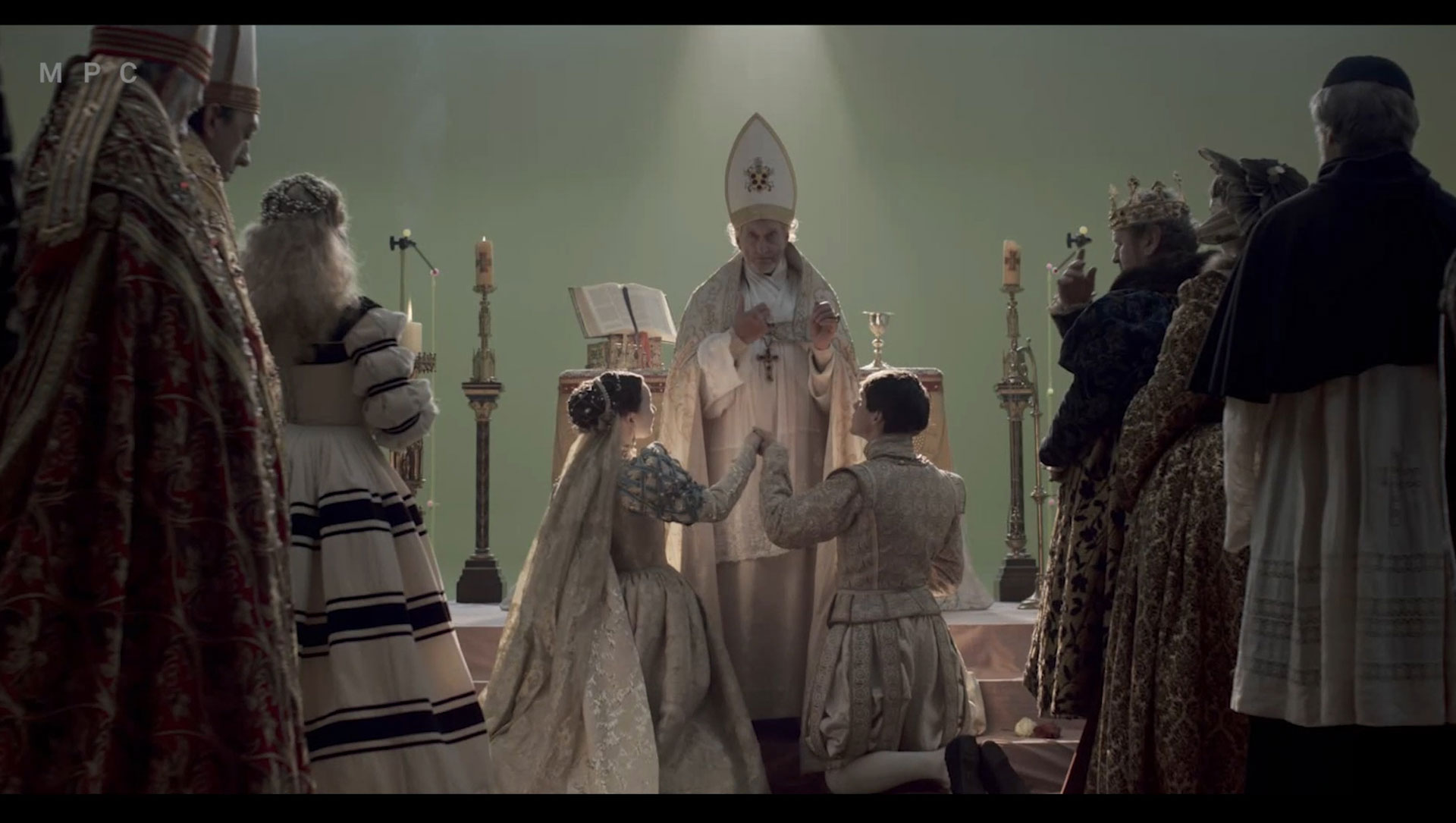
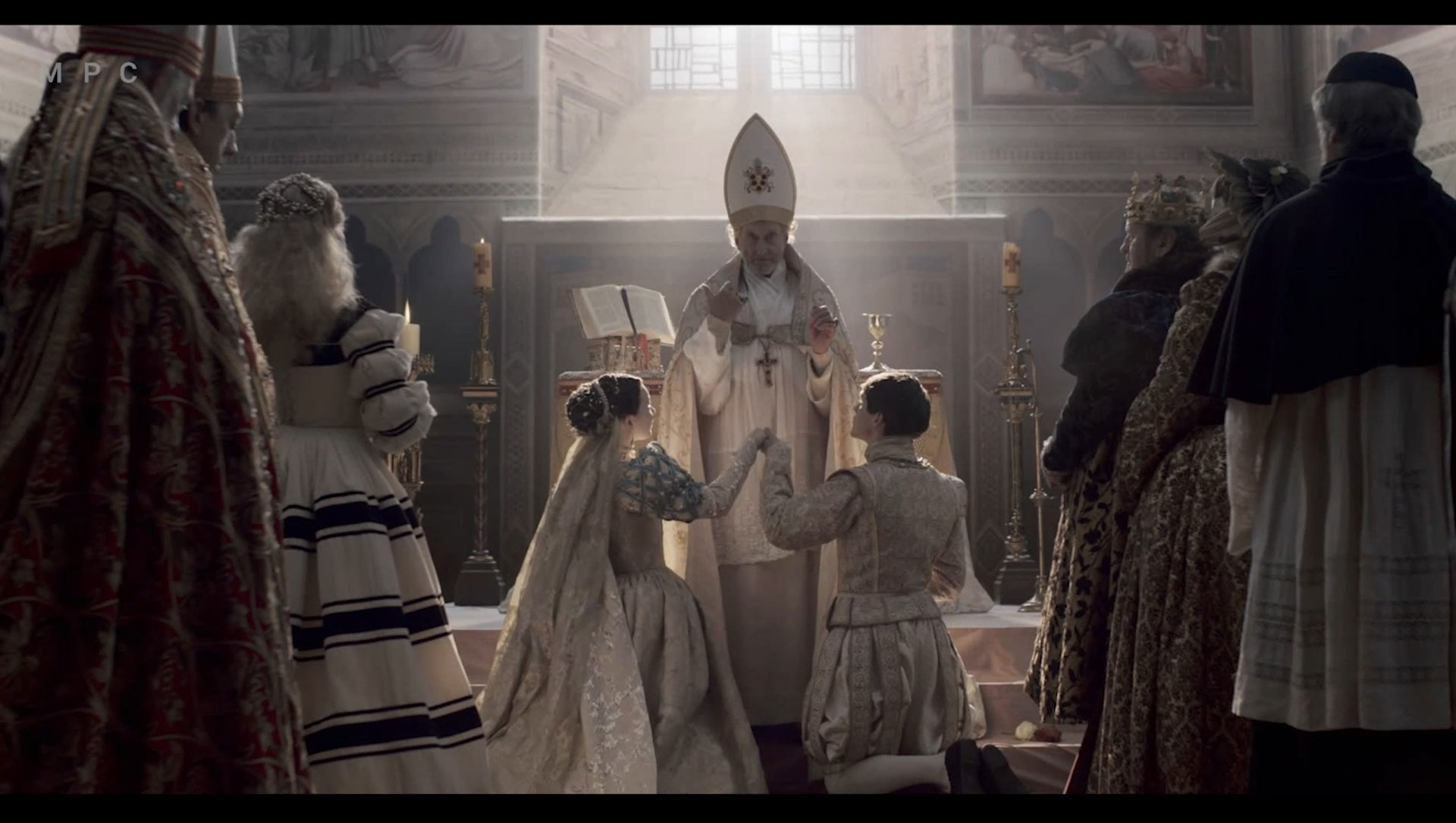
Did you want to reveal other invisible effects?
Bastien: The invisible effects are the main part of the shots in Serpent Queen. We often replaced faces of equestrian doubles, added flags, extras…
For the coronation sequence, for example, we recreated a crowd around the actors, but the proximity of the camera prohibited any recourse to 3D, so actors and horses shot individually on a blue background were added. This sequence required a particular follow-up. Both in terms of continuity, because everything had to be recreated in each shot, and in terms of the finesse of the overlay, given the size of the characters in the story.
We also took care of a small ambush sequence where we animated arrows, blood and impacts.
Charles: These invisible effects are indeed a major part of our work on this project. And for these shots we always must find the right balance between reality and the legibility of the action. A scene with blood, for example, always must be balanced according to its place in the montage.
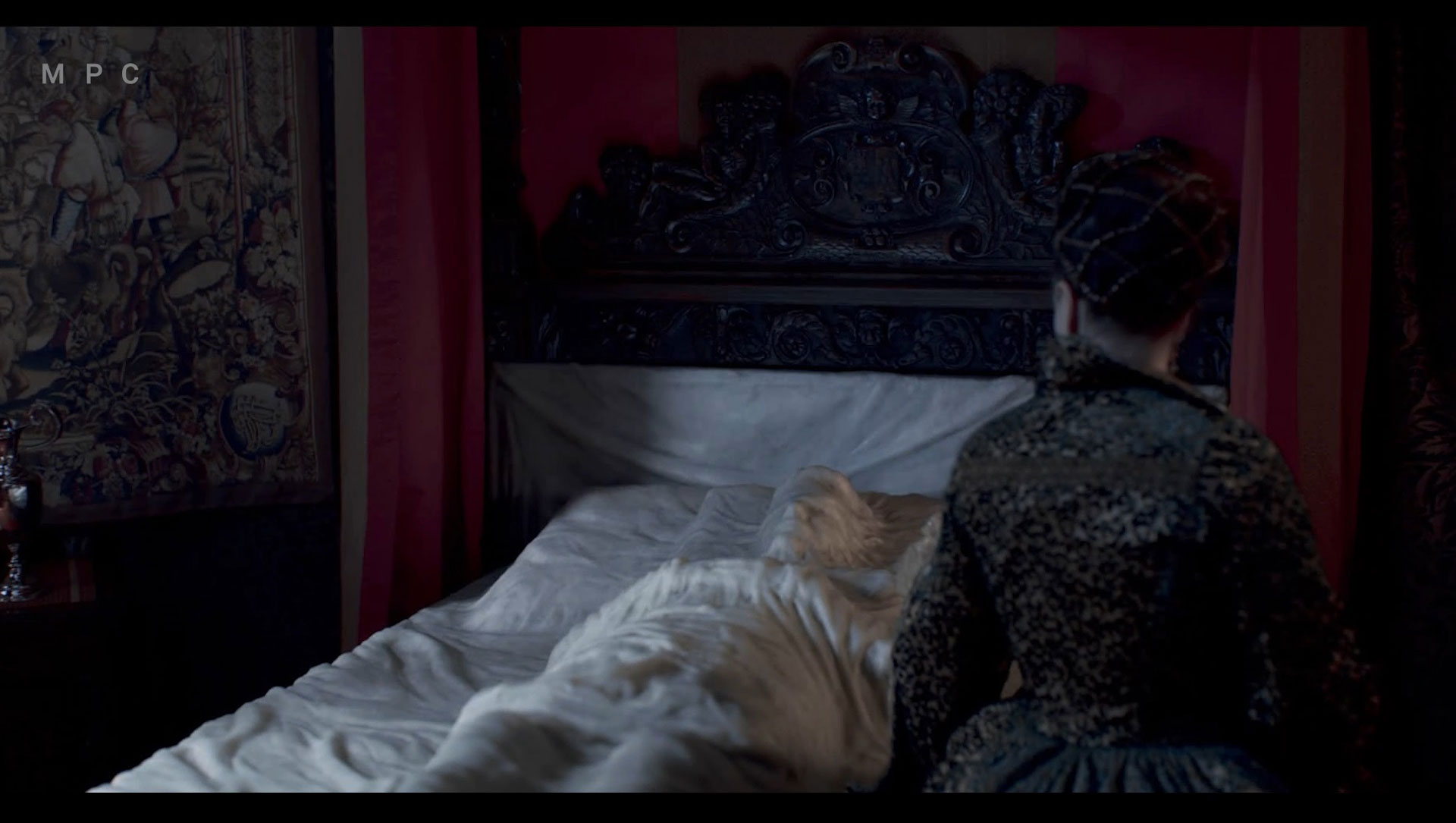
What is your favourite shot or sequence?
Bastien: In the end I think it’s the shot where Catherine has a vision of her dead husband. She is sitting on her bed, the camera turns, and the body of Henri II turns into a recumbent, these mortuary statues. As the shot was not meant to be a vision of the future, but rather a manifestation of her fears, we did not recreate the real recumbent statue of Henry II, which can be seen in the Basilica of Saint-Denis. We created our own, as a body soberly covered with a marble sheet. André Montero oversaw this work. It’s not the most impressive shot in terms of trickery, but I find it powerful and evocative. That’s what cinema is all about.
Charles: The shot of the recumbent figure is striking and is a good example of what tricks can bring to a story. For me, my favourite sequence is surely the one of the birth of Catherine de Medici, with its light that brings us closer to the work of painting.
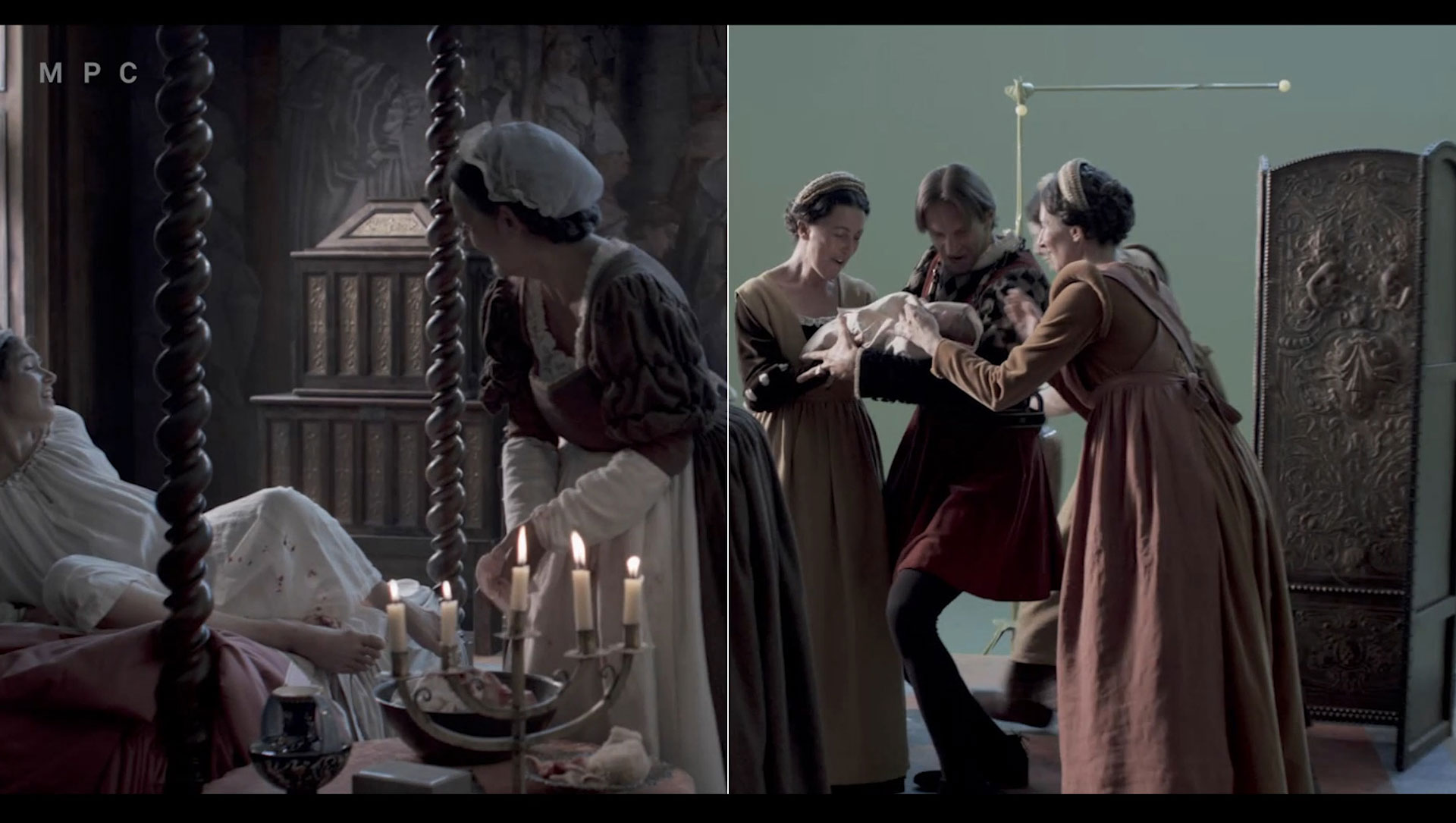
What is your best memory of the series?
Bastien: It was my first time at MPC Paris. I discovered a team of passionate and highly skilled visual effects artists. I could also rely a lot on the rigorous follow-up of Kristina Prilukova and Perig Gilleron at the production. So, I would say that my best memory of this production is also the last one: when we received the thanks and congratulations from the producers and the creative team.
Charles: For me, it’s the moments of exchange on the sets with the team to find the small details to bring to the shots. It’s always gratifying to see that our images are really the result of the work of many people with the same aesthetic objective. The team was great, and the good mood was always there!
A big thanks for your time.
// The Serpent Queen – VFX Breakdown – MPC





